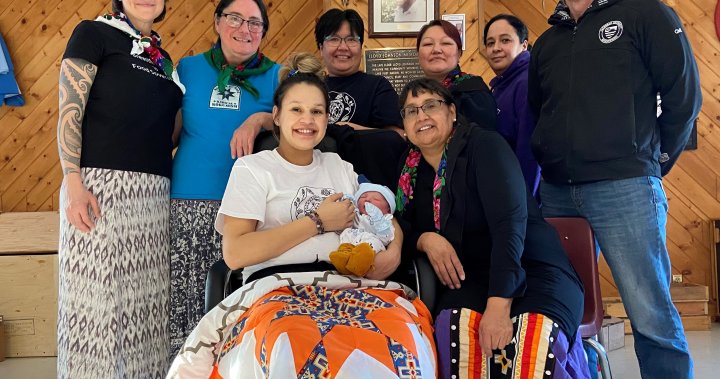
Inside the push to end ‘birth evacuations’ in Indigenous communities
Global News
The practice of "birth evacuation," was put in place by the federal government decades ago, with the intention of reducing infant mortality rates, according to a 2021 study.
A fire was lit in the healing lodge in Sturgeon Lake First Nation, Sask., while Ashley Rabbitskin prepared to welcome her baby boy into the world. A smudging ceremony purified the space and her family, along with a team of midwives, helped guide her through her labour using traditional medicines.
As the baby began to crown, both the midwives and Ashley’s family began singing, celebrating his arrival into the world.
Ashley’s son, Kaleo, was born on Feb. 22, 2022, marking the first traditional birth in the community in over 50 years.
“It was done naturally and it was not rushed, it was done peacefully in such a loving manner,” said Ashley’s mother, Norma Rabbitskin, who is also a senior health nurse manager at Sturgeon Lake Health Centre.
“When he was placed on in Ashley’s chest, it was really powerful because it was seeing the connection,” she told Global News. “It was full circle to witness; I myself was born in my home community, so to see that it was very special to me.”
In 2015, the Truth and Reconciliation Commission of Canada issued 94 calls to action, urging the federal government to acknowledge and uphold the health-care rights of Indigenous Peoples. Specifically, Call to Action 22 asked Canada to recognize the value of Indigenous healing practices.
Ashley’s childbirth became an important step in making this a reality, as the community is in the process of building a birthing centre. Rabbitskin said the hope is to restore the tradition of community-based childbirth, something Indigenous people have been deprived of for decades.
In remote Indigenous communities across Canada, many healthy, low-risk pregnant women are forced to give birth hundreds of kilometres away from their families, culture and language. This is because many remote communities do not have access to birthing facilities or health-care professionals.











